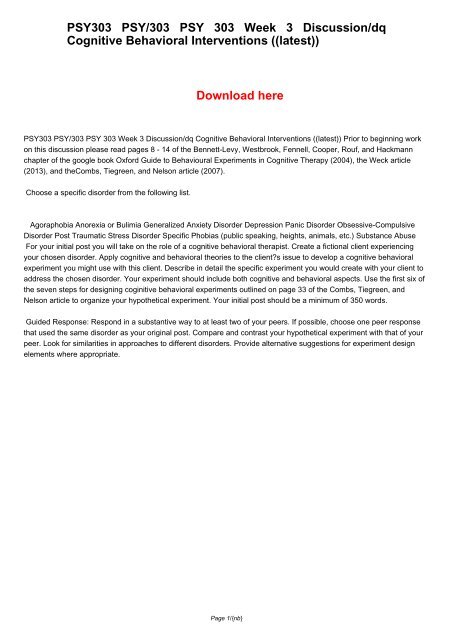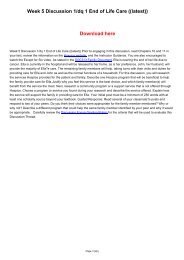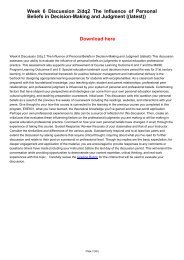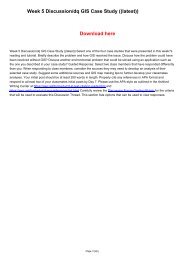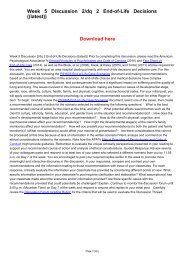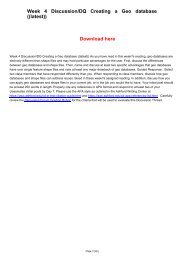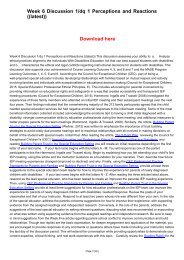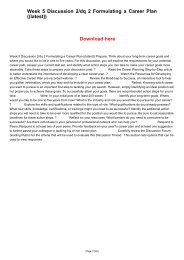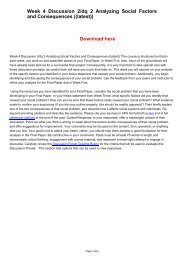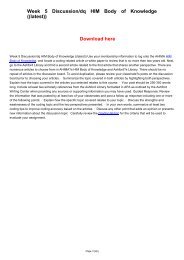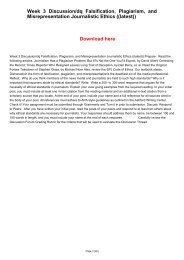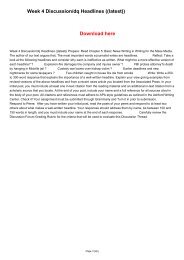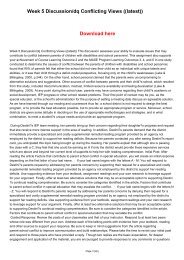PSY303 PSY303 PSY 303 Week 3 Discussiondq Cognitive Behavioral Interventions ((latest))
Create successful ePaper yourself
Turn your PDF publications into a flip-book with our unique Google optimized e-Paper software.
<strong><strong>PSY</strong><strong>303</strong></strong> <strong>PSY</strong>/<strong>303</strong> <strong>PSY</strong> <strong>303</strong> <strong>Week</strong> 3 Discussion/dq<br />
<strong>Cognitive</strong> <strong>Behavioral</strong> <strong>Interventions</strong> ((<strong>latest</strong>))<br />
Download here<br />
<strong><strong>PSY</strong><strong>303</strong></strong> <strong>PSY</strong>/<strong>303</strong> <strong>PSY</strong> <strong>303</strong> <strong>Week</strong> 3 Discussion/dq <strong>Cognitive</strong> <strong>Behavioral</strong> <strong>Interventions</strong> ((<strong>latest</strong>)) Prior to beginning work<br />
on this discussion please read pages 8 - 14 of the Bennett-Levy, Westbrook, Fennell, Cooper, Rouf, and Hackmann<br />
chapter of the google book Oxford Guide to Behavioural Experiments in <strong>Cognitive</strong> Therapy (2004), the Weck article<br />
(2013), and theCombs, Tiegreen, and Nelson article (2007).<br />
Choose a specific disorder from the following list.<br />
Agoraphobia Anorexia or Bulimia Generalized Anxiety Disorder Depression Panic Disorder Obsessive-Compulsive<br />
Disorder Post Traumatic Stress Disorder Specific Phobias (public speaking, heights, animals, etc.) Substance Abuse<br />
For your initial post you will take on the role of a cognitive behavioral therapist. Create a fictional client experiencing<br />
your chosen disorder. Apply cognitive and behavioral theories to the client?s issue to develop a cognitive behavioral<br />
experiment you might use with this client. Describe in detail the specific experiment you would create with your client to<br />
address the chosen disorder. Your experiment should include both cognitive and behavioral aspects. Use the first six of<br />
the seven steps for designing coginitive behavioral experiments outlined on page 33 of the Combs, Tiegreen, and<br />
Nelson article to organize your hypothetical experiment. Your initial post should be a minimum of 350 words.<br />
Guided Response: Respond in a substantive way to at least two of your peers. If possible, choose one peer response<br />
that used the same disorder as your original post. Compare and contrast your hypothetical experiment with that of your<br />
peer. Look for similarities in approaches to different disorders. Provide alternative suggestions for experiment design<br />
elements where appropriate.<br />
Page 1/{nb}


